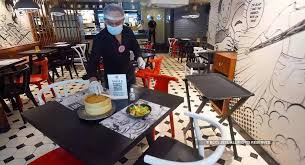If you want to open a restaurant, you will need to set up a legal structure. Whether you want to operate your business as a sole proprietorship or as a partnership, you’ll need to pick a legal form that protects you from personal liability. As a restaurant owner, you’ll have a large number of customers, employees, and employees’ guests on a daily basis, and you want to avoid any liability for accidents and damage.
Costs
One of the most important costs of running a restaurant is labor. The amount paid for employees varies with the type of establishment and the number of employees. Labor costs in the restaurant industry are usually between fifteen to twenty percent of a restaurant’s maximum profit. Restaurants need to hire excellent employees and try to keep them if possible. Labor costs should be monitored on a daily basis to ensure they are commensurate with revenue generated.
While food is often the biggest cost in a restaurant business, the costs of labor can eat into the budget of a new restaurant. Labor startup costs can be quite high, so it is imperative to hire employees who are excited about learning and growth. In addition to hiring excellent employees, it is also essential to estimate the amount of food you need to invest. Food costs should be between twenty-eight to thirty-two percent of total sales.
Location
When choosing a location for your restaurant business, there are many factors to consider. First of all, you need to determine the competition in the area. The competition in a specific area will affect your restaurant’s success. It is therefore important to select a location with high visibility and low competition. It is also important to research the competition in a given area so that you can understand the customer base in that area.
Management team
To successfully run a restaurant business, you will need a management team that consists of people with the right mix of personality types and technical expertise. The ideal team is comprised of between ten and twenty people. If the team is larger than that, it will be more difficult to communicate and make decisions. However, with between 10 and fifteen people, it is easier to resolve differences.
A restaurant manager must cover all the bases and be able to effectively manage expectations. It is also important to be able to monitor costs and revenue. This means constantly monitoring your expenses and finding ways to increase your sales.
Financial projections
Financial projections are very important when you are starting a restaurant. They show potential lenders how much your business will be able to grow and repay a loan. When you are first starting out, however, you do not have historical records to rely on. Therefore, you must rely on your projections.
There are a variety of different templates you can use to create financial projections for your restaurant business. Many of them are based on the budgets of manufacturing companies and have been modified to suit the restaurant industry. The financial projections for a restaurant business should include both operating and capital budgets.
Labor costs
When operating a restaurant business, one of the biggest expenses is labor. Labor costs can make up as much as thirty to forty percent of your revenue. This number is calculated by dividing the labor cost over a specified period of time by total sales. This percentage helps you determine the impact labor costs are having on the profitability of your restaurant business.
The labor cost percentage is a key number to monitor when setting up a restaurant budget. Keeping track of your total labor costs will help you navigate tough financial times. For example, if you have employees that regularly work overtime, setting a target percentage for them can help you remain on track financially.
Target market
When you are considering opening a restaurant, it’s important to consider your target market. When you’re planning a new venue, it’s especially important to conduct research to understand the demographics of your target market. This will help you develop marketing strategies that will help you reach your ideal customer base. However, conducting a market analysis can take a lot of time, especially if you’re just starting out. Fortunately, there are tools available to help you find high-level demographic information, but you’ll need to do some legwork to pinpoint your target market.
Your target market is the group of people who are most likely to come to your restaurant and purchase your products. While you might be tempted to target every customer in the area, it’s a good idea to focus on a specific niche. This will ensure that you can serve your customers better, keep your inventory low, and provide a high profit margin.
